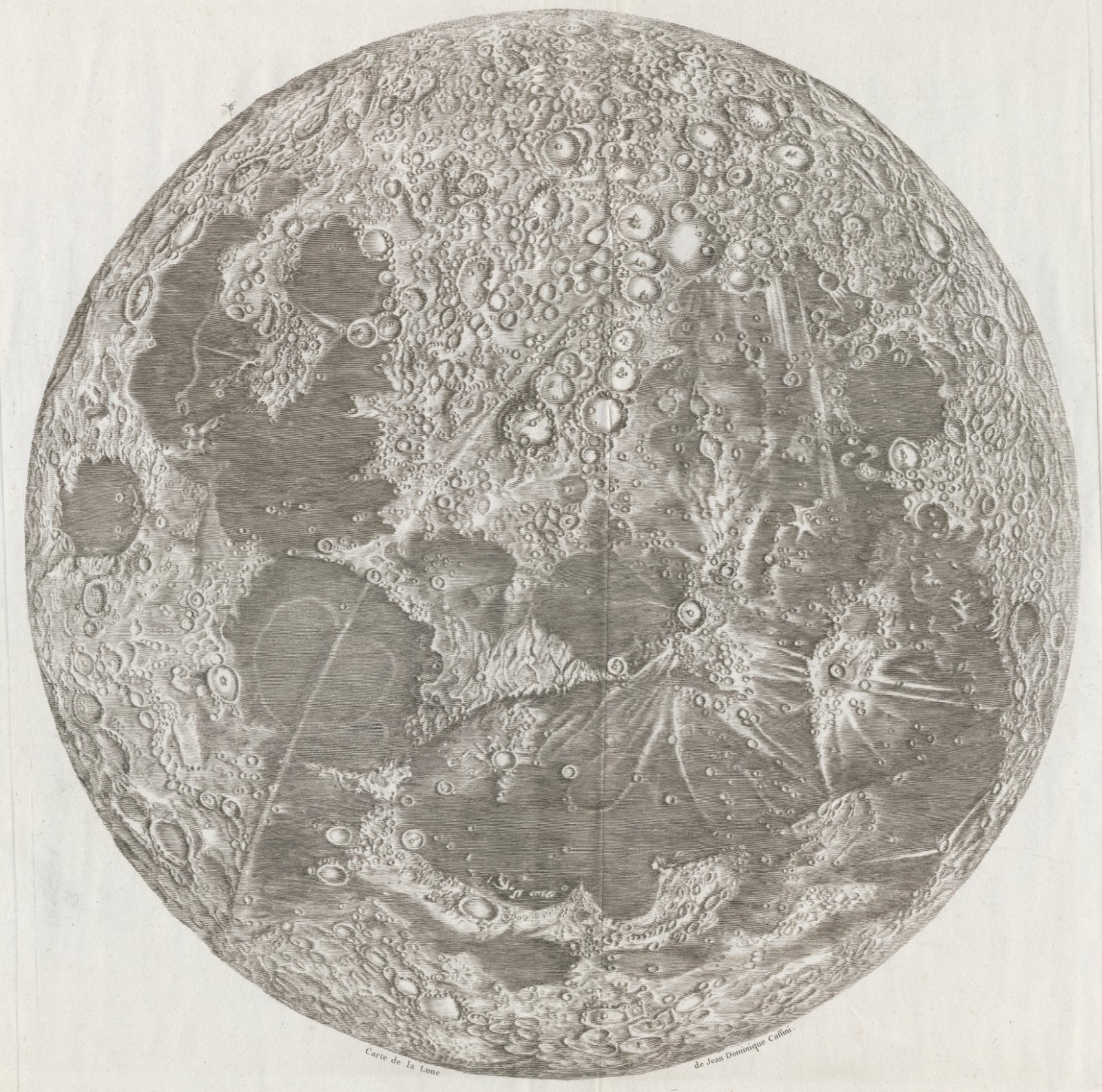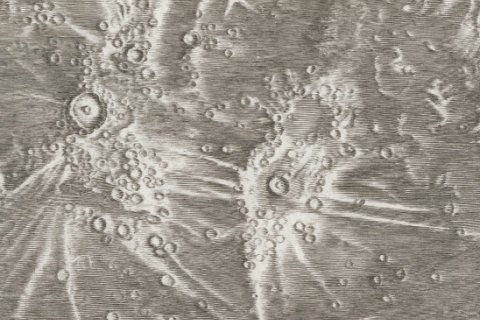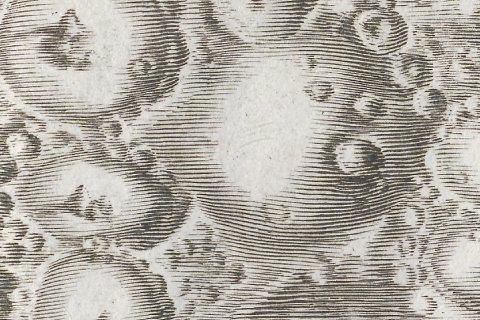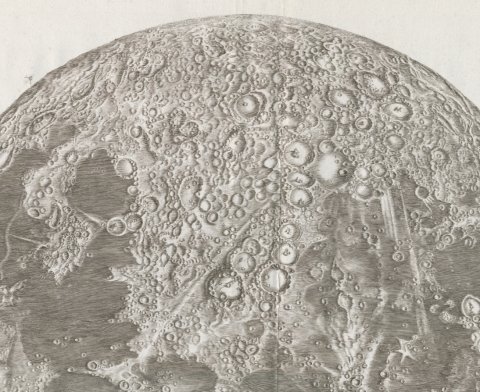'Carte de la lune' by Cassini
Woman on the moon
It is common knowledge that Neil Armstrong, who died in 2012, was the first man to walk on the moon. In 1969 the whole world could watch, live on TV, the American jumping and frolicking on the surface of the moon during that memorable mission of the Apollo 11. But nobody seems to know that almost three centuries before a woman had been standing on the moon! This detailed lunar map from 1679 is solid evidence of this fact!

Cassini’s observations

The representation of the moon on this map is based on the observations of the French-Italian astronomer Jean-Dominique or Giovanni Domenico Cassini (1625-1712). Since 1669 Cassini had been working in Paris, as the first director of the new local observatory. This observatory was founded in 1667 by order of the French king Louis XIV, also known as the Sun King. In producing his lunar map, Cassini was assisted by the draughtsmen Jean Patigny (before 1632-after 1679) and Sébastien LeClerc (1637-1714). Between 1672 and 1679 they produced approximately sixty detailed drawings of the moon. Up to the present day, these drawings are kept in the library of the Paris observatory.
Reprint from 1787
In the end, the copperplate based on these drawings was engraved by Patigny and in 1679 the first edition of Cassini’s large moon chart was published. Copies of this first edition are rare; the map presented here is an unchanged reprint from 1787. Only the text ‘Carte de la Lune de Jean Dominique Cassini’ was added to the bottom side of the hemisphere. The reprint (100 copies) was edited by Cassini IV (1748-1845), the great-grandson of Jean Dominique Cassini. He recovered the supposedly lost copperplate in the archives of the Paris royal printing office, the l’Imprimerie Royale.
Orientation to the south

Like most lunar maps published before the beginning of the era of space exploration, this lunar map is characterized by an orientation towards the south. This means that the north is on the bottom side, because this is the image shown when looking through a reversing telescope.
The moon lady

A remarkable detail of this influential lunar map can be found in the middle of the bottom side of the hemisphere. Here a raised mountainous cape is located (now known as Promontorium Heraclides) drawn in along the Gulf of Rainbows (Sinus Iridum). This promontory is represented as a woman’s head with long wavy hair. According to some scientists this is a representation of the head of Geneviève de Laistre (1643-1708) whom Cassini married in 1673. So she was the first woman on the moon! An often quoted reference to this woman’s head on the moon can be found in the last chapter of the well-known work Entretiens sur la pluralité des mondes (1686) by the French philosopher Bernard le Bovier de Fontenelle(1657-1757).
Authors
dr. R.H. (Rob) van Gent
Researcher


